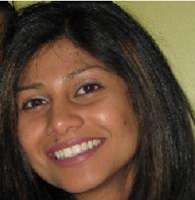Wow, I can’t believe this course is
coming to an end. I must say, it was a
great reminder on the wealth of tools I already have in my PLE, not to mention
some of the new ones I have added through my learning journey of this course.
 |
| Datoo, S. (cc2013) |
Given the remarkable extent to which
technology has transformed our lives, bringing a vast new world of information
resources into our homes, classrooms, libraries, and offices, it seems clear
that among the most essential ingredients of success today is the ability to learn,
communicate, evaluate, and manage all forms of information. It is imperative for
people to know how to absorb, analyze, integrate, create and effectively
convey information—and who know how to use information to add meaning and real value.
This week we explored podcasts and
screencasts, all of which are great for creatively sharing information. In the classroom, they can be used to create
a series of tutorials to demonstrate complex concepts or reinforce
learning. Text can be pretty boring,
however, creating podcasts and screencasts are not only fun for the creator, but
learners seem to be more engaged. One
of the biggest advantages I find is that it allows for mobile learning. Students can view and listen to them on
their mobile devices such as tablets, iPads, and their smartphones, which can
lead to a productive bus or train ride home!
Digital literacy skills are a must and significantly
important to work and learn in our information society today. The consequences of lacking skills in this
domain could have potentially numerous negative implications, not just for
individuals but for society as a whole.
In the higher education context, students who lack digital literacy
skills cannot benefit fully from learning opportunities either in the classroom
or beyond. No matter what field one is
studying, success depends on one’s ability to organize the information once it
has been amassed, to assimilate it, and in the end, find meaning in it. Thus, for example, students who lack basic digital
literacy skills are likely to be ineffective or inefficient in their attempts
to conduct research using the Internet because they lack an understanding of
effective search strategies; they may also have difficulty analyzing and interpreting
the information they gather (e.g., judging the credibility of a source, or
comparing various sources of information). Further, they may be unable to
communicate their ideas effectively using technology, such as organizing data
in a graph or composing their findings in a research paper with graphic
enhancements and exhibits.
Many of the technologies we depend on today will soon become
obsolete, and new ones will replace them. It is therefore imperative that we,
as educators, help our students develop the skills that will allow them to reap
the benefits of any technology as well as understand their responsibilities of being digital citizens.
I had a hard time adding the CC License to the header and footer, so I have included this below.
Shaila's Digital Footprint by Shaila Datoo is licensed under a Creative Commons Attribution 4.0 International License.



